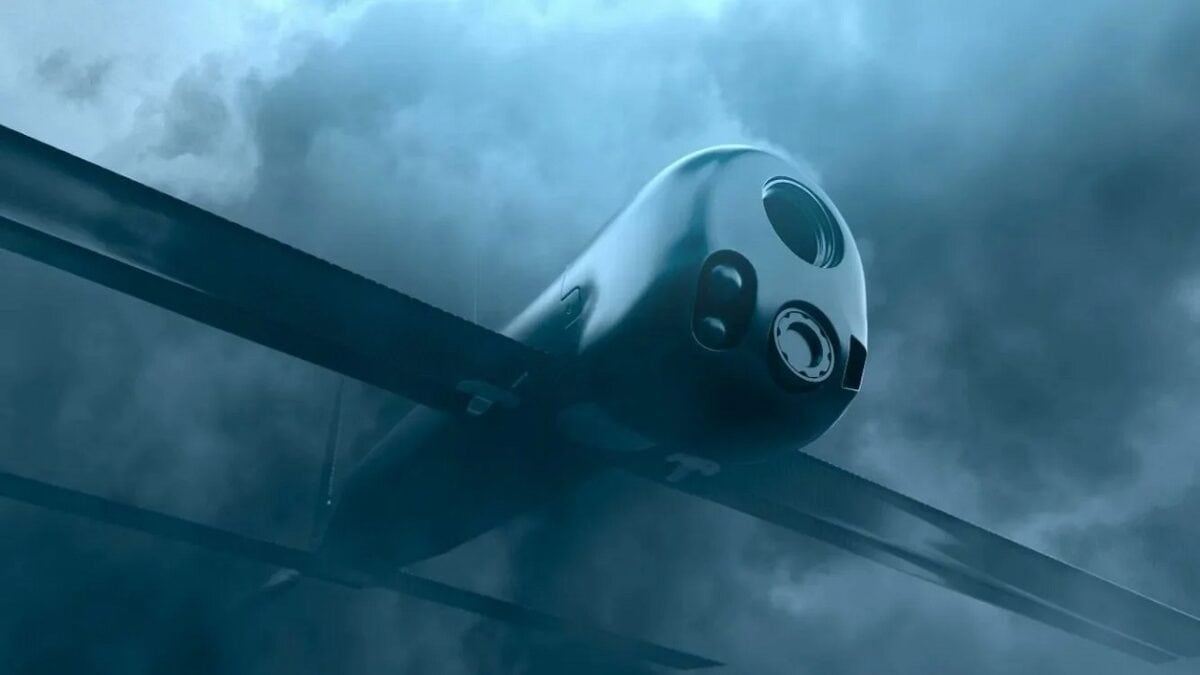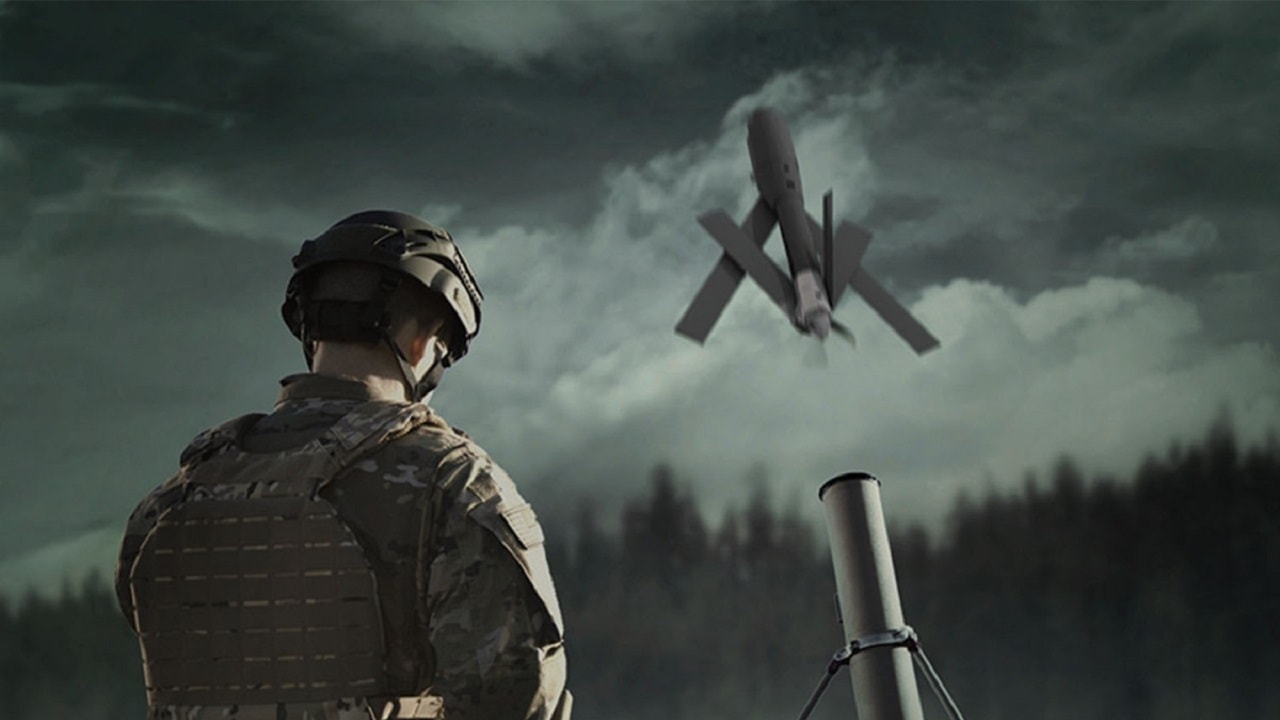This Friday, a Facebook post by Ukraine’s 53rd Mechanized Brigade includes a video purportedly showing a kamikaze-style attack by a Switchblade drone on a Russian bunker in Ukraine.
Reportedly the first video of a Switchblade loitering munition strike on Russian troops by Ukraine’s 53rd Mechanized Brigade.https://t.co/dF8RlPWm5a pic.twitter.com/6XKnm7SLBI
— Rob Lee (@RALee85) May 6, 2022
In a postscript, the post written by brigade commander Col. Dmitry Titenko reads: “Thus, with the help of the tactical strike unmanned aerial vehicle Switchblade, the occupiers were compelled to flee, who were so zealously preparing fortifications.”
The Switchblade loitering munition—also known as a kamikaze or suicide drone—has been in use with the U.S. military for over a decade. Like other weapons in its class, it combines the characteristics of a small drone and guided missile. Its name stems from its folding wings, which switch back into position after launch.
Like a typical surveillance drone, a Switchblade operator can scout for targets using its integral camera. But once a target is identified, the operator can direct the drone to smash into the target and detonate its fragmentation warhead.
The United States first announced it was sending Switchblades to Ukraine in March. They are also sending 700 Aeroenvironment Switchblade unmanned systems to Ukraine, of which 100 have been confirmed delivered. Each ‘system’ may count up to ten explosive-laden drones and one control unit.
Ukraine is receiving both models: the shorter-range Switchblade-300 is suitable for soft targets close to the frontline, while the much heavier Switchblade-600 can conduct deep strikes out to 25 miles away and knock out armored vehicles.
Due to the size of the blast and the nature of the target, the attack seen in the video is almost certainly the shorter-range Switchblade-300.
The 53rd Mechanized Brigade is believed to be holding off Russian forces to its south in the vicinity of Velyka Novosilka in southeastern Ukraine. Sixty miles south of its position, the last Ukrainian defenders of Mariupol are holed up in its Azovstal steel plant. Still, the 53rd lacks the strength to break through the Russian screening regiments of the 42nd Motor-Rifle Division.
The target of the Switchblade strike is an apparent Russian fortification—possibly a machine gun nest—connected to a network of defensive trenches. The recording itself comes from the vantage of a separate drone, which may seem surprising given the Switchblade has its own camera. But because a -300 model has only 10 minutes of endurance, identifying the target using a higher-endurance surveillance drone is likely necessary to take full advantage of Switchblade’s maximum range.
Rather than falling in the trenches or the bunker’s roof, the munition explodes directly in front of the dugout, causing two nearby Russian soldiers to flee.
It’s unclear how much damage was caused by the strike, or if there were personnel in the bunker (four soldiers were visible earlier in the video). Though the munition seemingly “misses” the target, its small, grenade-like warhead is designed to vent deadly fragments in a focused arc rather than in a circular blast radius. In this case, the blast appears angled to discharge into the open firing port of the dug-out.
This type of position isn’t exactly a ‘high-value target’, but it shows how the smaller Switchblade 300 can be used as a sort of precision 60-millimeter mortar to locate and destroy strong points which could potentially impede attacking infantry and inflict casualties.
The small, directionally focused nature of the Switchblade-300’s blast, and the ability to abort an attack even seconds before detonation, also make it ideal for mitigating risks of collateral damage to civilians. It also explains why the kamikaze drone’s fuselage may remain relatively intact after exploding its munition.

Switchblade Drone. Image Credit: Industry Handout.
We don’t know how long the Switchblades have been in use prior to the release of this video. However, Russian forces have shared images of what appears to be a Switchblade-300 that crashed near Kharkiv, its forward warhead-bearing section apparently discharged. That’s far north of the 53rd Brigade’s area of operations, implying Switchblades are being disseminated broadly.
#Ukraine: The first ever appearance of a US-supplied Switchblade 300 loitering munition (Kamikaze Drone) in combat in Ukraine – these remains were recovered by Russian forces in #Kharkiv Oblast. pic.twitter.com/gPhL5m9idc
— ?? Ukraine Weapons Tracker (@UAWeapons) May 6, 2022
Russia has been using its own Zala KUB-BLA loitering munitions in the war, which seem prone to a high ‘dud rate’ given the numbers recovered relatively intact. Ukraine also developed indigenous loitering munitions prior to the conflict but it’s unclear if they are in use.
The #Russian Aggression on #Ukraine
In #Kyiv, they found the wreckage of the Russian “kamikaze drone” KUB-#UAV made by the company ZALA Aero Group.
This is probably the first confirmation of the use of our high-precision strike #drones during the Russian invasion pic.twitter.com/L4cqM9I33w— Shadi Alkasim (@Shadi_Alkasim) March 12, 2022
Tactical-level reconnaissance/strike systems like the Switchblade-300 make infantry units more effective by giving them portable precision-strike capabilities they can use without exposing troops to direct fire or having to phone into higher headquarters to request air and artillery support.
However, the larger Switchblade-600 has more promise as a potential game-changer due to its ability to destroy material targets including air defense and artillery vehicles, communications/electronic warfare systems, tanks, and fuel and ammunition depots well behind the frontline.
Sébastien Roblin writes on the technical, historical, and political aspects of international security and conflict for publications including The National Interest, NBC News, Forbes.com, War is Boring, and 19FortyFive, where he is Defense-in-Depth editor. He holds a Master’s degree from Georgetown University and served with the Peace Corps in China. You can follow his articles on Twitter.

